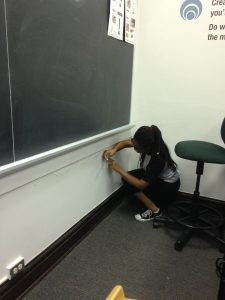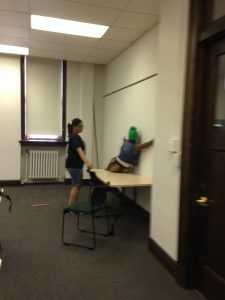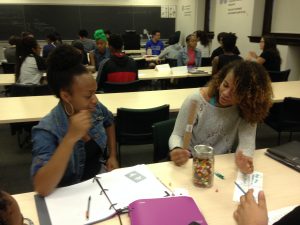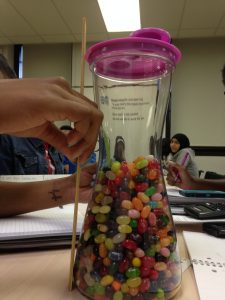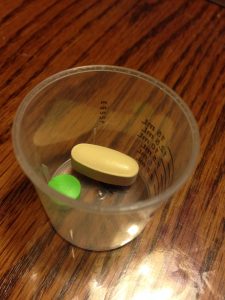The skills of estimating and performing unit conversions are useful in mathematics at many levels as well as in many scientific situations. The estimation challenge works on both of those important skills. In this challenge students are asked to answer odd questions such as “How many slices of Kraft American cheese would it take to wallpaper this room?” The goal is not to get the “exact right answer” but rather to determine the magnitude of the answer (the power of 10 part when expressed in scientific notation). This gives a sense for how big the quantity is.
After all groups had estimated their answers, we compared answers and discussed any questions the students had.
Here is the text of the Order of Magnitude Estimation challenge:
******************************************************************************************
ORDER OF MAGNITUDE
Work out your estimations on scrap paper, and record the ten-to-a-power part.
1. How many slices of Kraft American cheese would it take to wallpaper this room?
2. How many cherries would fit inside the four tires on a school bus?
3. How many gallons of water would it take to fill this building?
4. How many pounds does the ancient statue The Sphinx weigh?
5. How many dollar bills laid end-to-end would it take the reach the Sun?
6. How many kernels of corn are in full square mile cornfield?
7. How many poker chips would it take to fill the High Bay at UDM?
****************************************************************************
The Order of Magnitude Estimation Challenge was developed by a colleague of mine (Dr. Jeffery Boats) here at the University of Detroit Mercy. He designed the activity as part of the mathematics content of a summer experience for incoming freshmen. This activity along with some jelly bean estimation, were the first of four days of mathematics content. The student participants in the summer experience are planning a variety of majors in biomedical fields. Funding for the summer experience is provided by the National Institutes of Health (NIH) as part of a $21.2 million dollar grant over a five year period. For more information about the grant and the summer experience, visit rebuildetroit.org.
One of the challenges of teaching mathematics to this group is the wide variety of mathematical backgrounds and placement scores the students come in with (anywhere from developmental math to calculus 2). It is important to provide activities which engage all students without overwhelming or boring anyone. The solution devised by the mathematics department is to present topics that are off the beaten track or that recur in many courses. This estimation challenge isn’t a part of any standard course and also uses the skills of number sense/estimation and unit conversions which show up in many courses. As another example, on the fourth day of the mathematics portion of the summer program students used K’nex construction toys to investigate function composition as described in a previous post on this blog
